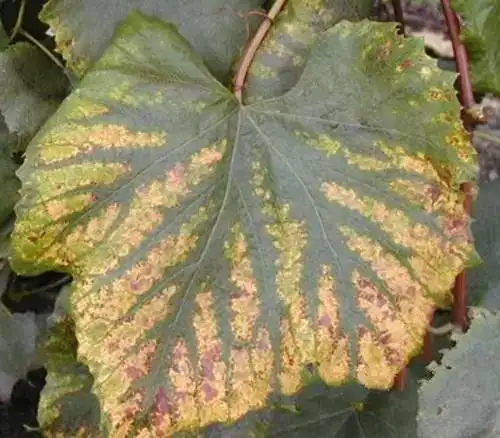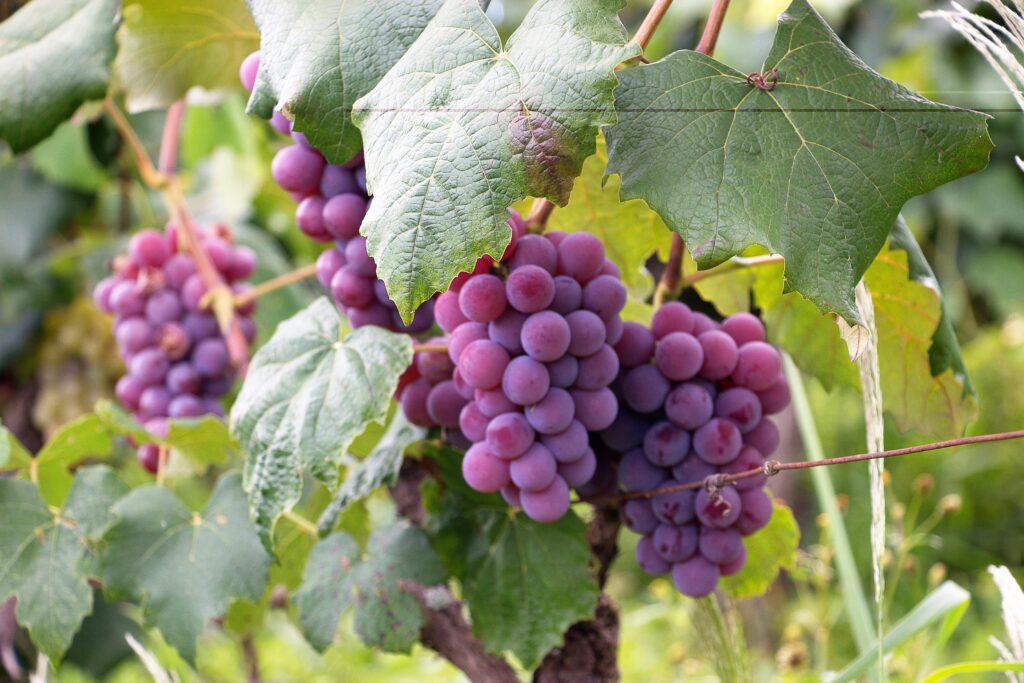Grape is not only delicious, but also rich in nutritional value. It is a very nourishing fruit. Grape juice is known as “plant milk” by scientists. Grape contains protein, carbohydrate, crude fiber, calcium, magnesium, phosphorus, iron, potassium and other trace elements, and contains carotene, vitamin B1, vitamin B2, vitamin C, vitamin P, vitamin PP, etc., in addition, it also contains more than ten kinds of amino acids and fruit acid needed by the human body.
Therefore, grape needs a lot of nutrients during the whole growth period. Grape needs to absorb pure magnesium 4.97 kg/mu throughout the year, 2.8 times of phosphorus.
The demand for magnesium in grape is similar to the absorption of nitrogen, phosphorus and potassium. The demand for magnesium increases after flowering, especially in the fruit expansion stage. Magnesium is very important for the photosynthesis of grape leaves and the transport of carbohydrates to the fruit. After harvesting, grape leaves and roots will continue to grow for a period of time, during which the absorption of nutrients is relatively vigorous. On the one hand, the tree stores nutrients, and on the other hand, the functions of leaves and roots are prolonged, which is conducive to the growth of new shoots in the next year.
Magnesium is the central element of chlorophyll. In the absence of magnesium, chlorophyll in old leaves is degraded and green is lost between veins, while veins remain green. General grape fruit expansion period began to appear magnesium deficiency in leaves. Magnesium deficiency may also occur in grape leaves in the area of magnesium deficiency.
Typical magnesium deficiency symptoms of interveinal loss of green appear in grape leaves at flowering stage. Without timely magnesium supplementation, interveinal yellowing will gradually worsen after flowering and at leavening stage, and eventually brown or gray white necrotic stripes will appear between veins.
When magnesium deficiency occurs in grapes, high temperature and strong light will aggravate the magnesium deficiency. In the sunny side of open field grapes and the upper leaves of greenhouse grapes, the yellowing phenomenon between veins will be aggravated.

Effect of magnesium deficiency on flower of grape
Magnesium deficiency not only affects leaf function, reduces photosynthetic area, but also affects sugar transport to flowers and fruits. In production, we found that the quality of flowers in grapes with magnesium deficiency decreased, because sugar is needed to provide material and energy for flowering and pollen maturation. The chloroplast photosynthetic capacity and starch conversion capacity in anther inner cortex are important for anther development and pollen formation. Therefore, the lack of magnesium during the anther period will cause dysplasia of grape anthers, or fail to form mature anthers, affecting fruit setting.
Effect of magnesium deficiency on grape fruit
Is grape fruit enlargement period to maturity of the largest amounts of magnesium are required, the demand for magnesium during this period accounted for about 56% of the whole growth period, is also the most common phenomenon of magnesium deficiency in production period, the enlargement of the fruit color and need a lot of sugar accumulation, comes from the leaf photosynthesis in the synthesis of sugar to the fruit, and fruit development period is accompanied by strong sugar metabolic processes, Need a lot of magnesium, so this period of magnesium deficiency, there will be a lack of magnesium yellowing around the leaves of fruit. Due to the yellowing of the leaves around the ear and the decline of function during the period of expansion and color change, it will also cause the phenomenon of uneven color change, decreased hardness and size grain of the fruit. Grapes are also more susceptible to disease when their grains become less hard.
Good trees, good grapes. In spring, grape roots and leaves need a lot of magnesium to build good, healthy leaves. The synthesis of sugars by leaf photosynthesis and their transport to roots, new leaves, and fruits REQUIRE MAGNESIUM. So don’t wait for grapes to lack magnesium to supplement magnesium. Magnesium supplement should be early, Grow good roots, good leaves and good fruits.


